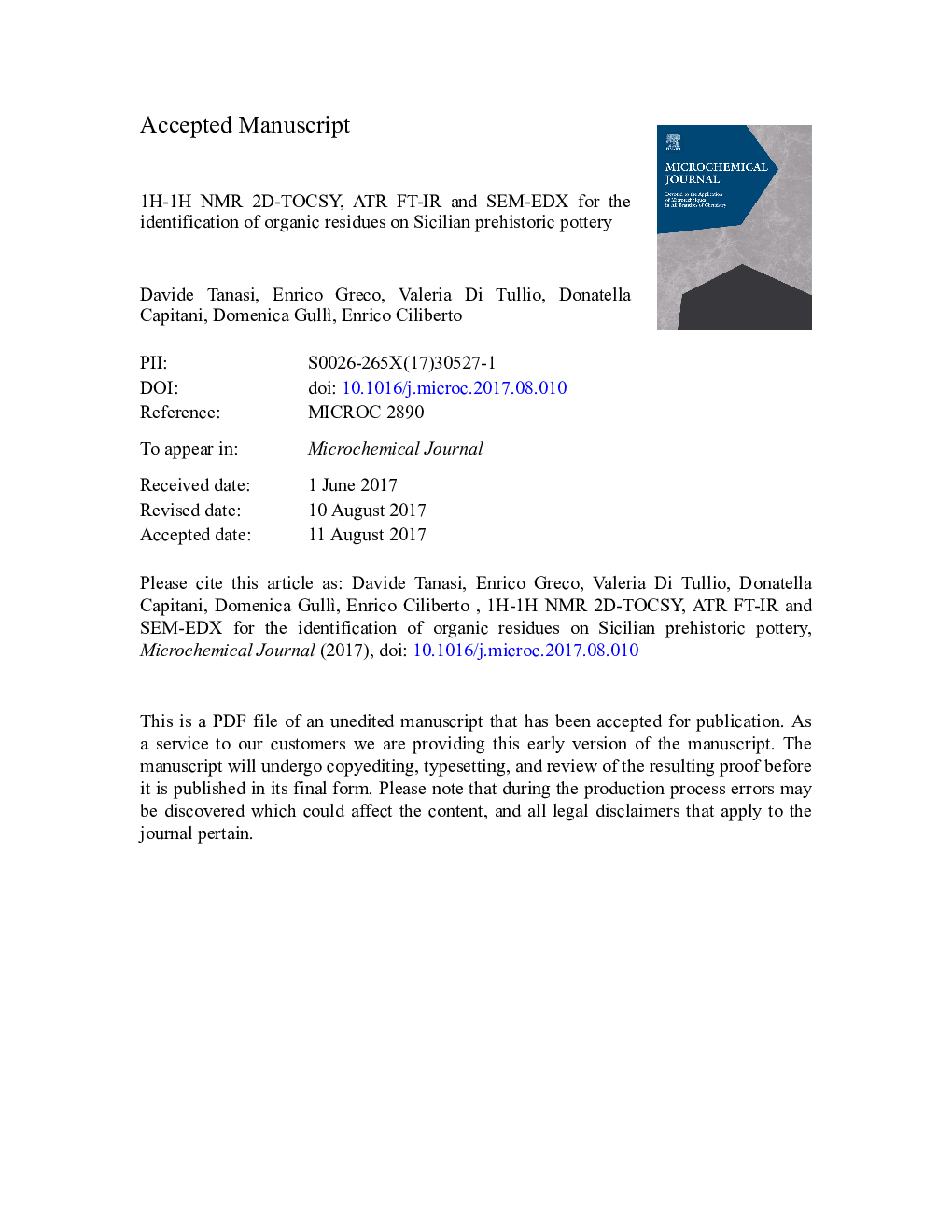| Article ID | Journal | Published Year | Pages | File Type |
|---|---|---|---|---|
| 5139228 | Microchemical Journal | 2017 | 18 Pages |
Abstract
Insights into the diets of early societies can be gained, indirectly, from the cultural evidence of artefacts related to food procurement, preparation and consumption and human skeletal remains. However, more direct evidence for dietary constituents derives from the identification of intact plant and animal remains collected during the excavations but also from the exam of the amorphous remains of foodstuff associated with artefacts. Organic residues adhering to the surface or absorbed into the porous fabric of an unglazed cooking vessel should provide important information both about the usage of the vessel and dietary practices. This contribute deals with the results of a combined analytical research via 1H-1H NMR 2D-TOCSY, ATR FT-IR and SEM-EDX on organic residues on pottery from two Sicilian prehistoric sites of Monte Kronio and Sant'Ippolito. The goal was that to shed new light on the use of certain ceramic shapes and infer some hypothesis about ancient dietary habits.
Keywords
Related Topics
Physical Sciences and Engineering
Chemistry
Analytical Chemistry
Authors
Davide Tanasi, Enrico Greco, Valeria Di Tullio, Donatella Capitani, Domenica Gullì, Enrico Ciliberto,
